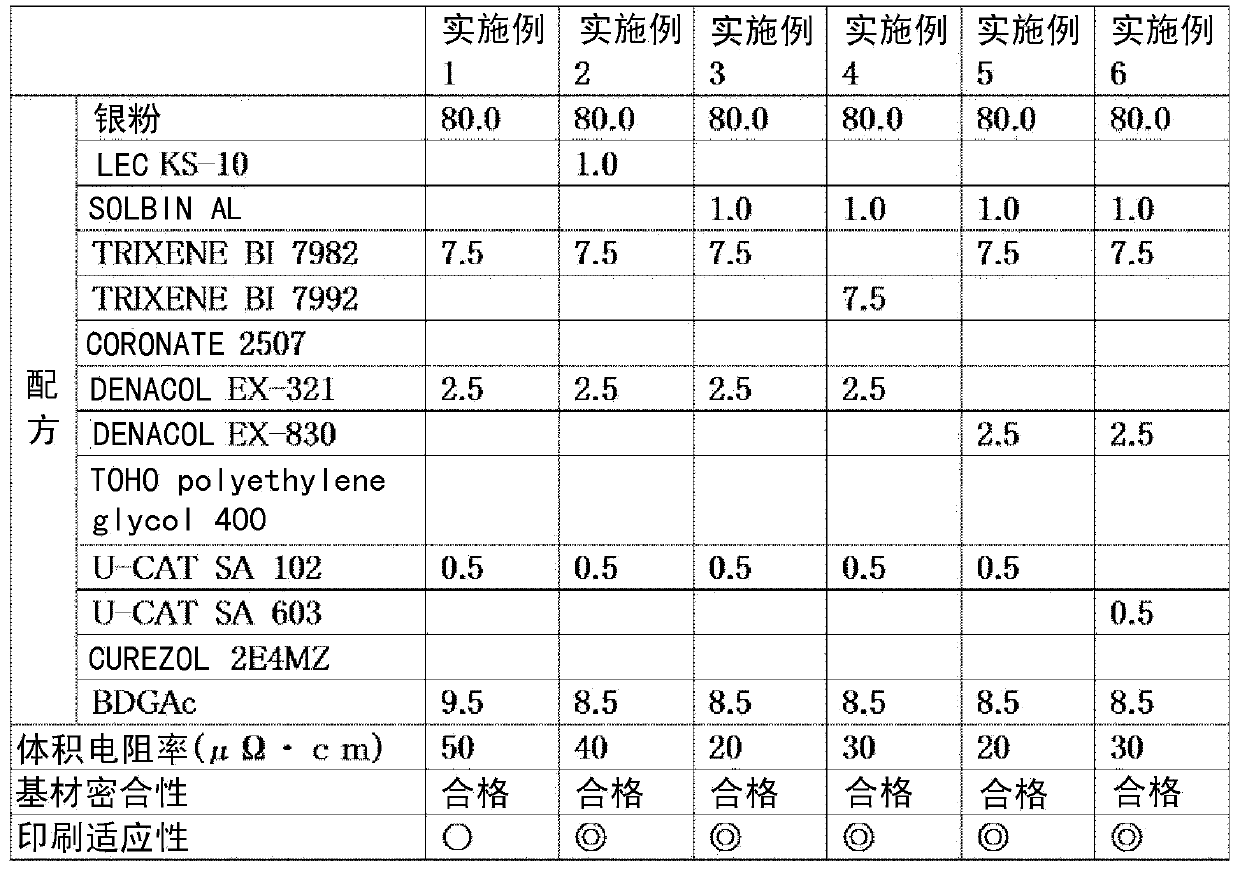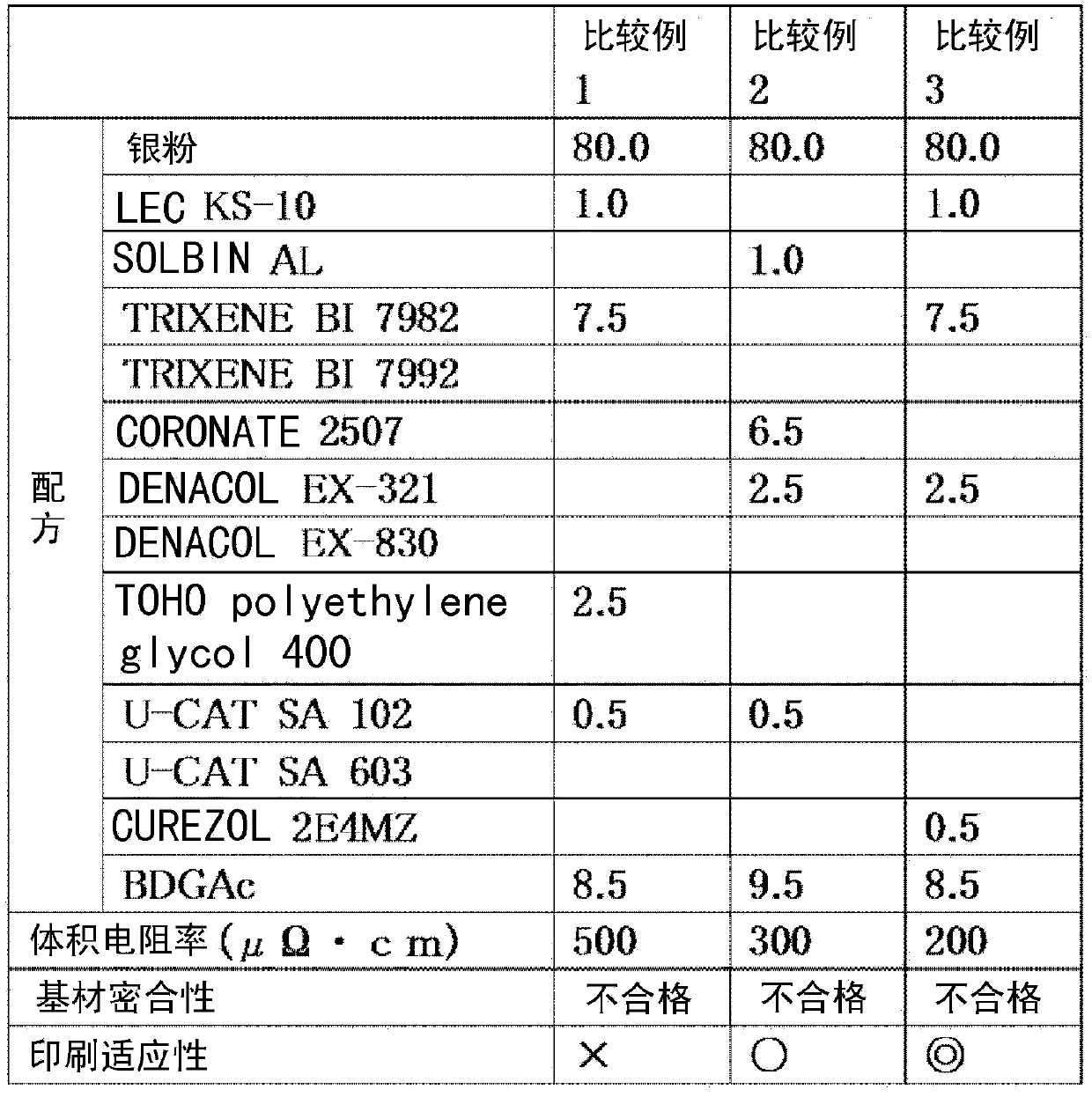Conductive ink composition, method for producing conductive patterns, and conductive circuit
A technology of conductive ink and composition, which is applied to the formation of conductive patterns, equipment for manufacturing conductive/semiconductive layers, conductive materials dispersed in non-conductive inorganic materials, etc., which can solve the problem of high curing temperature and long firing time and other issues to achieve high productivity
- Summary
- Abstract
- Description
- Claims
- Application Information
AI Technical Summary
Problems solved by technology
Method used
Image
Examples
Embodiment
[0067] Hereinafter, the present invention will be specifically described based on examples. "%" here means "mass %" unless otherwise specified.
[0068] Each raw material was used in parts by mass described in Table 1, and these raw materials were mixed sufficiently to prepare each conductive ink composition of the present invention as an example and each conventional conductive ink composition as a comparative example.
[0069] For each of these conductive ink compositions, the characteristics of the conductive ink composition itself and the characteristics of the conductive pattern obtained therefrom were evaluated by the following measurement items. The evaluation results are collectively shown in Table 1 and Table 2 below.
[0070](volume resistivity)
PUM
| Property | Measurement | Unit |
|---|---|---|
| particle size | aaaaa | aaaaa |
| particle diameter | aaaaa | aaaaa |
| boiling point | aaaaa | aaaaa |
Abstract
Description
Claims
Application Information
 Login to View More
Login to View More - R&D
- Intellectual Property
- Life Sciences
- Materials
- Tech Scout
- Unparalleled Data Quality
- Higher Quality Content
- 60% Fewer Hallucinations
Browse by: Latest US Patents, China's latest patents, Technical Efficacy Thesaurus, Application Domain, Technology Topic, Popular Technical Reports.
© 2025 PatSnap. All rights reserved.Legal|Privacy policy|Modern Slavery Act Transparency Statement|Sitemap|About US| Contact US: help@patsnap.com


